Will the latest ultra-budget, hype-train Zeroes be Heroes or, dare I say, of zero value?
There is a smorgasbord of budget CHI-FI IEMs named “Zero”. Storied brands such as BGVP, Tanchjim, and Truthear all have budget IEMs christened “Zero.” Thankfully, not all are ranked ZERO in reviewer scores, with some having quite decent levels of acclaim, despite their namesake.
For clarity, for the rest of this article, we will use the nomenclature “Zero” to refer exclusively to the 7Hz Salnotes Zero.
- Cheap, excellent price-to-performance ratio
- Above average isolation
- Natural timbre
- Fast and tight bass
- Relatively well-extended treble with good clarity
- Uncommon neutral bright tuning at this budget segment
- Detachable cable at affordable price-point
- Lack of bass quantity, not for bassheads
- May be fatiguing and sibilant, not ideal for treble-sensitive folk
- Sterile tuning, with thin note weight
- Average soundstage
- Possible fit issues
Anyway, why the name “Zero”? Apparently, 7Hz named this pair Zero, as they envisioned a vast eternity without boundaries and did not want to be confined by the limits of human imagination.
Company Overview
7Hz (and their sub-brand Salnotes) was formed in 2018. The 7Hz name is eponymous to the Theta Wave, a frequency that is linked to meditation and harmony. This ideal is always at the forefront for their tuning; the aim of their products is to project one into audio nirvana, as per the company slogan.
In fact, we have to thank 7Hz for starting the ball rolling for the current craze for IEM planars with the introduction of the Timeless. 7Hz then followed up with the acclaimed Dioko, which are a collaboration with famed reviewer Crinacle.
Some of their other notable IEMs include the Eternal, i77, i88, and the i99. 7Hz also recently entered the dongle DAC/amp game with the 71 Mobile DAC.
Technical Specifications
- Form: IEMs
- Drivers: 1 x 10 mm dynamic driver, metal composite diaphragm
- Impedance (Ohm): 32 Ω
- Sensitivity (dB): 108 dB/V
- Frequency Response (Hz): 10 Hz – 20 kHz
- Removable Cable: Y
- Cable: 4-core high-purity oxygen-free copper cable
- Source Plug: 3.5 mm
- Cup/Shell Plug: 0.78 mm 2-pin
Packaging
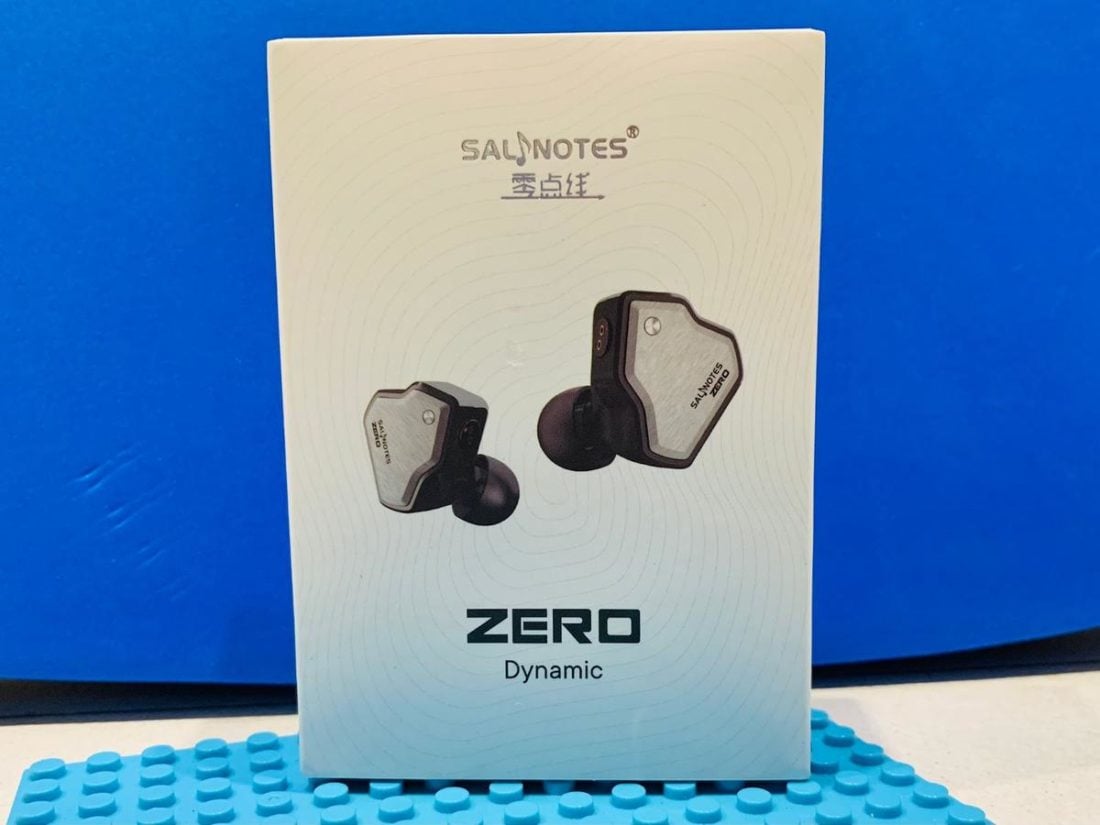
In the box
- 7Hz Salnotes Zero IEM
- 6 silicone ear tips (S, M, L)
- Cable
Well, considering the Zero cost less than many restaurant meals, we can’t complain too much about the spread of accessories provided.
Three pairs of ear tips come with a taller and narrower bore, whereas the other three come with a shorter and wider bore. The former give more bass with a compressed soundstage, while the latter provide less bass but give a slightly bigger soundstage.
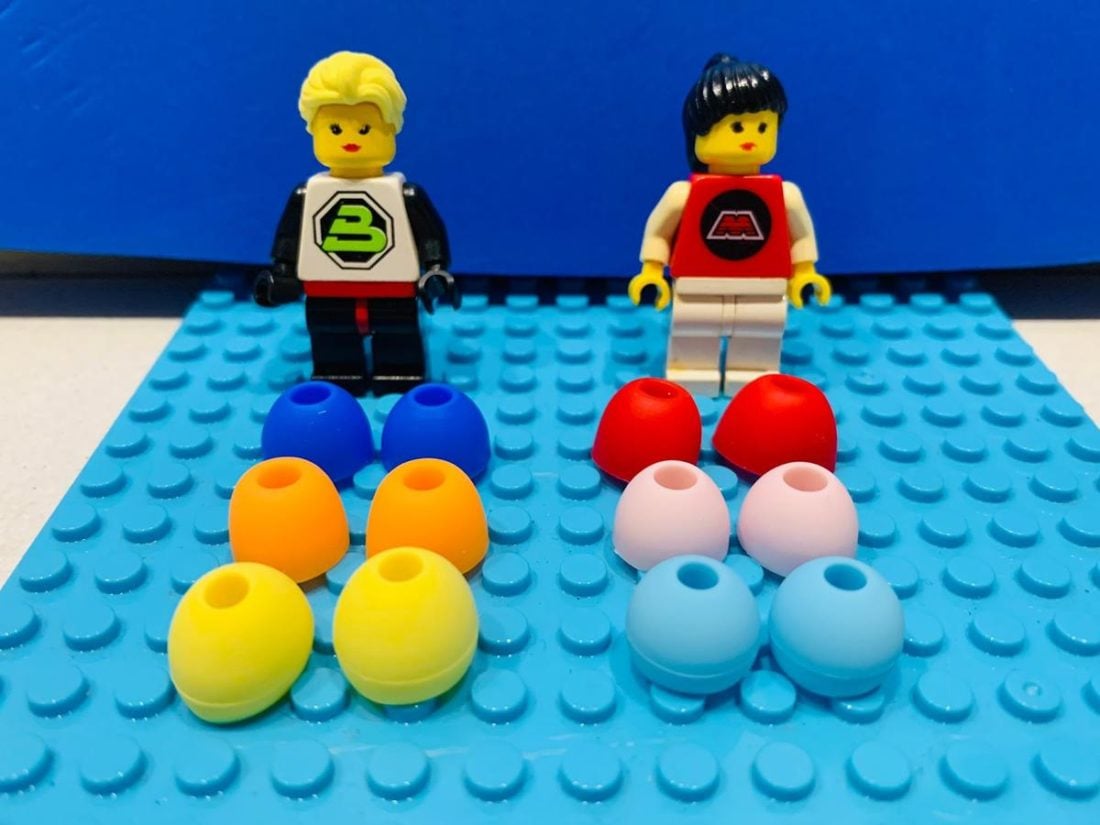
Cable
I am really pleased that the Zero come with a detachable cable; some competitors still push out IEMs with a non-detachable cable in this day and age!
Said cable is a 4-core high-purity oxygen-free copper wire, which 7Hz claims is designed to give maximum signal transmission. It is thin and tangly, but thankfully there are no microphonics, and the cable is quite serviceable in my book.
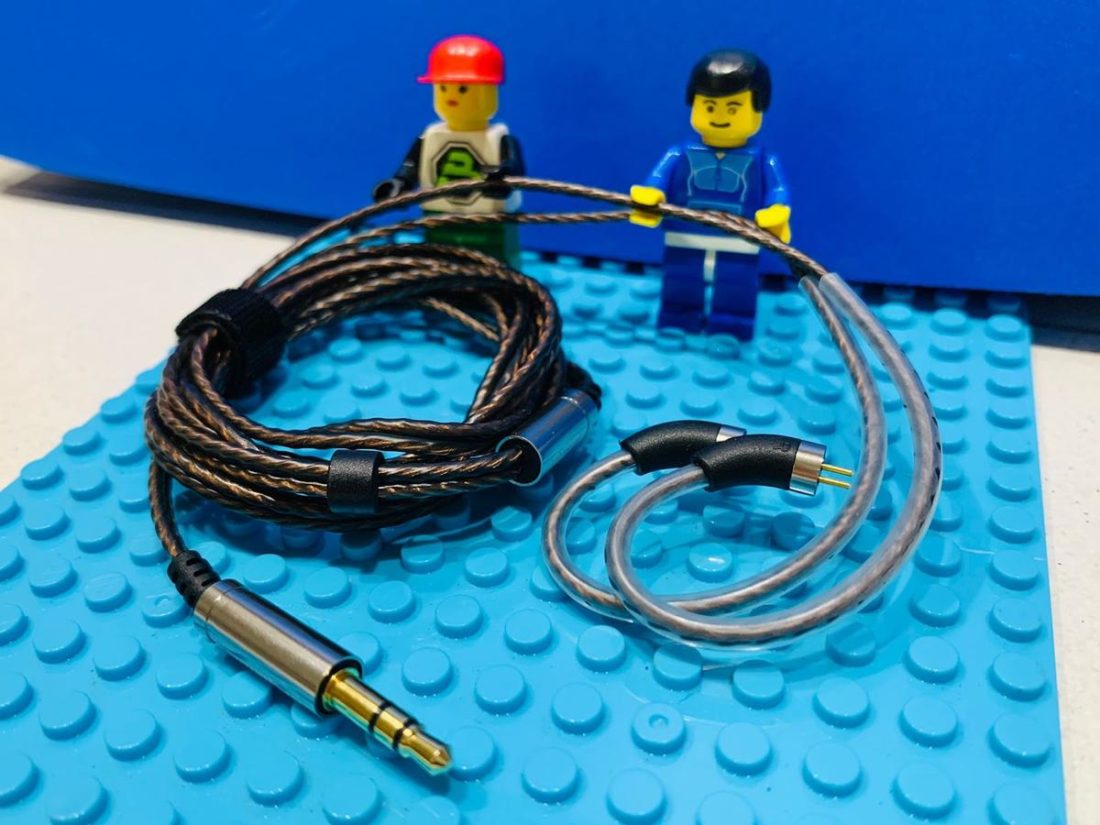
Design
The Zero feature a plastic chassis with an overlying stainless-steel faceplate. One can choose from a black, white, or blue shell during ordering.
For 20 bucks, the shells are quite well-built, though the silver faceplate may be a fingerprint or scratch magnet if one is not careful.
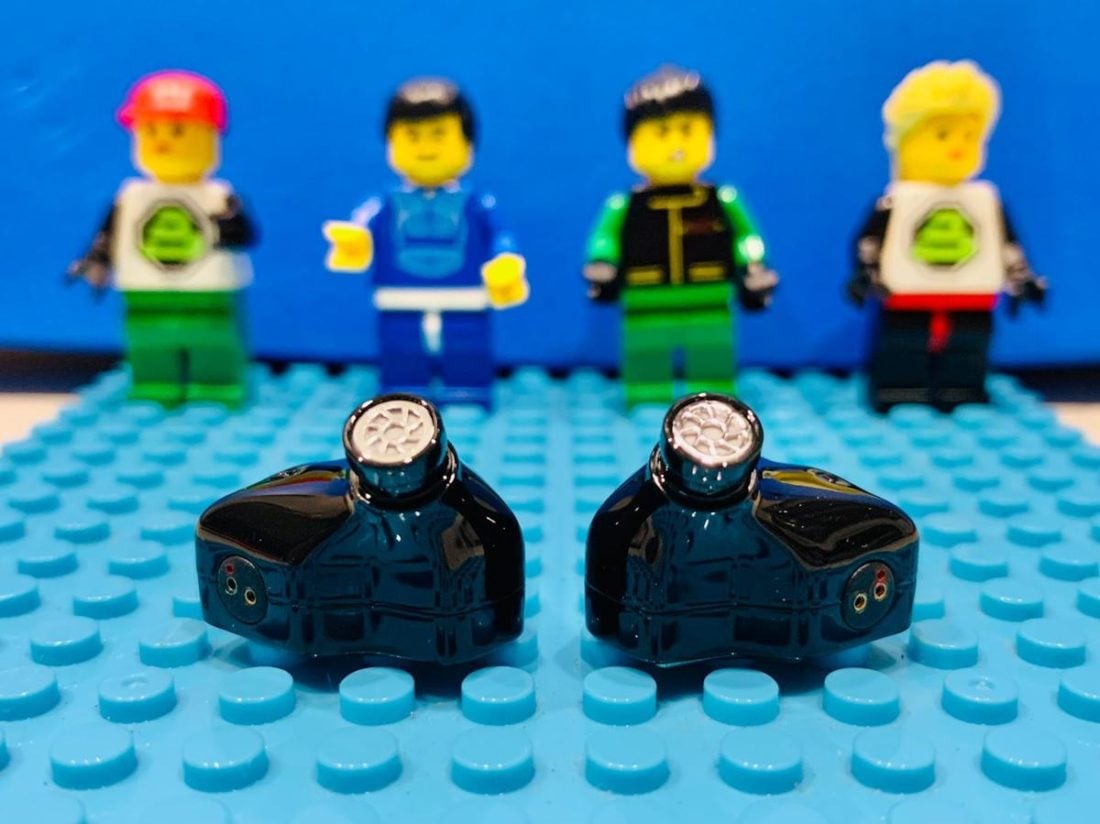
Isolation on the Zero is above average and quite decent, considering they are vented.
Comfort
The shells are relatively light, though I experience slight discomfort with prolonged usage. The Zero’s squarish shells have some prominent angled edges.
I did not find driver flex on my pair, but this may depend on the ear tips used and your ear anatomy.
Internals
The Zero utilize a 10mm dynamic driver with a metal composite diaphragm. Inside is an N52 magnet.
Considering most budget CHI-FI try to up the gamesmanship (and hopefully trample the competition) by quoting beryllium, planar or other exotic materials or designs, it is quite a breath of fresh air that the Zero do not resort to claiming uranium or pixie dust drivers in their marketing!
7Hz Salnotes Zero Sound
The Zero are relatively easy to drive. Amplification may add some dynamics and tighten the bass.
As per their namesake, the Zero have zero fat to the soundscape. They are lean-sounding with a thin note weight and veer towards a sterile and analytical tuning.
The Zero are also quite boosted in the treble, and they can exhibit sibilance and fatigue, especially for treble-sensitive listeners. Hence, this set pairs better with warmer and analogue-sounding sources rather than something analytical or bright.
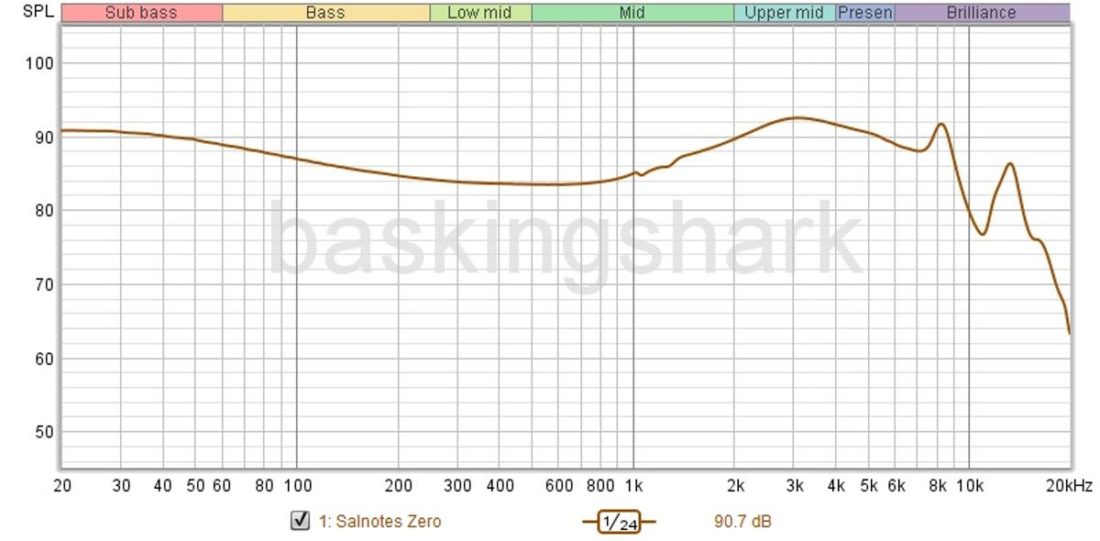
The Zero sport a neutral bright tuning, which is relatively uncommon in the ultra-budget segment. Most of their rivals are tuned V-shaped or to the Harman curve.
Bass
The Zero are sub-bass focused. They can sound flat when used for bass-forward music (eg, EDM, hip hop). The bass quantity is neutral, and this set won’t please bassheads for sure.
What the Zero cede in bass quantity, they ace in quality.
Bass is clean, tight, and fast, with zero mid-bass bleed (pun intended). Texturing is decent, and the Zero handles complex and rapid bass movements with aplomb.
The Zero did very well with my go-to bass test track, Sting’s Englishman In New York. I use this track for the evaluation of bass quality, and most other budget competitors cannot keep up with the bass movements, with the bass-lines smearing into a nebulous blob.
Midrange
The midrange of the Zero is tuned to be very transparent and clear, with no intrusive bass encroachment into this area.
With a 7dB pinna gain, the upper midrange is just slightly boosted and is relatively smooth and non-fatiguing. Vocals are forwards without sounding shouty or shrill. The high clarity showcases vocals very well, and mid-lovers will have a field day with the Zero.
The midrange is pretty well-balanced.
Treble
The Zero’s treble extends moderately well, with some sparkle and air. Unfortunately, the dreaded ‘S’ word – sibilance – rears its ugly head, and the upper treble can be fatiguing and harsh, especially for our treble-sensitive brethren.
Trebleheads will love the tuning, but I find that cymbals and high hats are overemphasized and splashy.
This frequency band is a mixed bag and will be a love-it or hate-it affair. Having said that, treble perception is very variable and depends on hearing health (and age), volume played at (Fletcher Munson curve), sources, ear tips, etc, so it is a YMMV situation.
Thankfully, aftermarket foam tips or silicone tips (eg, Final Audio E black tips) can tame the treble spiciness. Albeit, for a USD$20 IEM, I’m not sure if some folks are willing to spend extra coin to fix this region, as these aftermarket tips may cost nearly ¾ of the Zero’s retail price!
Timbral accuracy is excellent and organic, with acoustic instruments and vocals reproduced well.
Technicalities are nothing to write home about, but considering the asking price of the Zero, I can’t really nitpick too much for this department. The soundstage is bang average in all three directions. Imaging, micro-details, and instrument separation are fuzzy at times, though clarity is exemplary, partially aided by the neutral bright tonality and lean note weight.
Comparisons
The Zero will be compared against other ultra-budget single DD types. The Zero actually do well in technicalities against similarly priced competitors, but against some higher-end single DD sets like the Tripowin Olina or the DUNU Titan S, the Zero are noticeably weaker in this area.
Hybrids and pure BA IEMs were also left out of the comparison as the different transducer types have their own pros and cons.
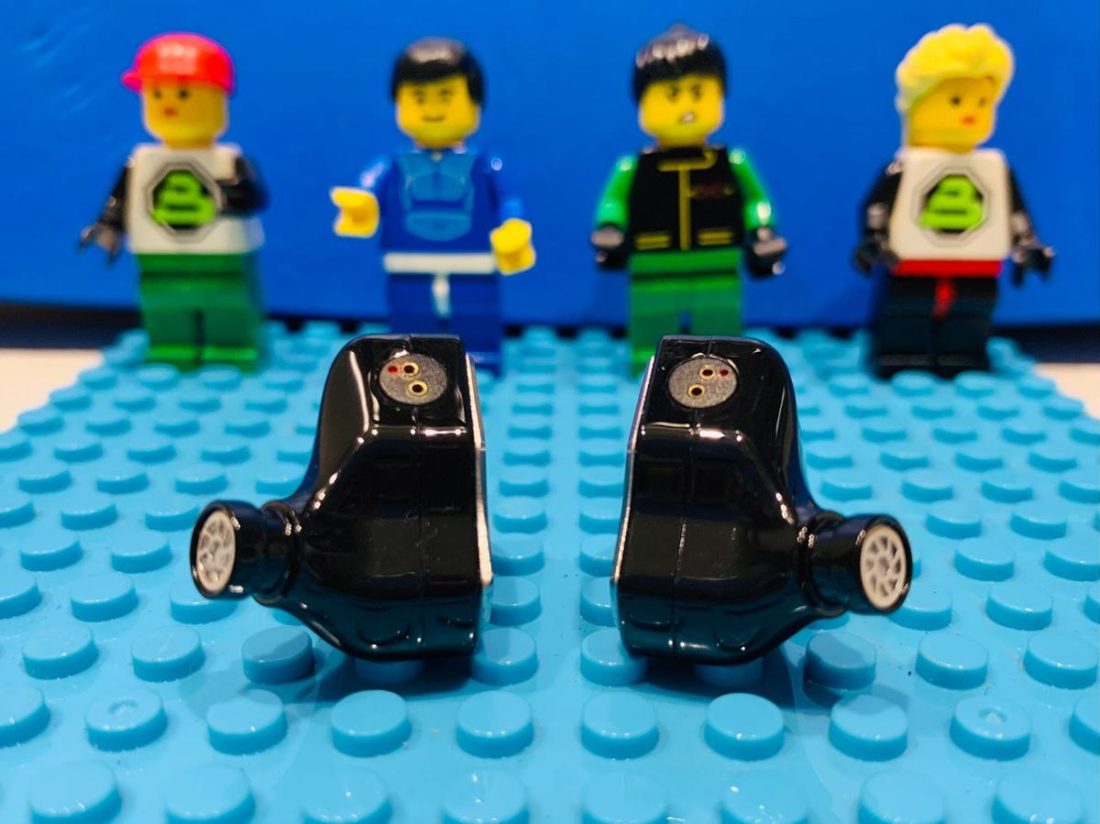
Vs. Tanchjim Tanya
The Tanya are a warm and bassy set with a bullet-shaped cable-down design. The Tanya are harder to drive and come with a non-detachable cable.
The Tanya are polar opposites in tuning, espousing a warm with a thick note weight, with greater bass quanty on display. The treble is much darker on the Tanya, with less air and sparkle, but they are smoother and less fatiguing as such.
The Tanya are not as technically proficient as the Zero, with a less tight bass – mid-bass bleed is present – and less micro-details and clarity. The Tanya have a more expansive soundstage, though the imaging is more nebulous.
These two sets are complementary – the Tanya are more analogue sounding and are best suited to chill and relax, whereas the Zero are more analytical, cleaner, and leaner.
Vs. Moondrop CHU
Folks must be asking: “Wasn’t the Moondrop Chu just hyped to the moon a few weeks ago?” Well, the Chu have had their fifteen minutes of fame and are now yesterday’s hype train. That’s how fast this industry moves!
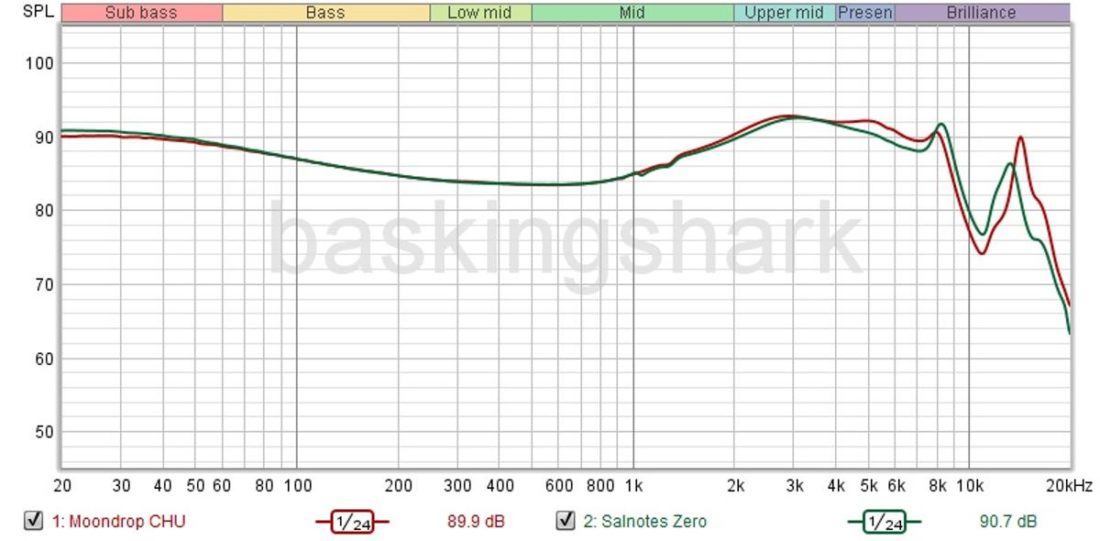
Jokes aside, tonally, the two are similar, but the Chu are hotter in the lower treble. The Chu have a markedly more nasal and metallic timbre than the Zero, and this is apparent when vocals come out to play.
Technically, the Chu are a hair behind, showcasing slightly worse imaging, instrument separation, and soundstage.
The Chu come with a non-detachable and very thin cable, which may be a deal-breaker for some. However, the Chu have a waifu anime girl packaging, which may cover a multitude of audio sins for some.
At the end of the day, the Zero are slightly more refined than the Chu, in terms of technicalities, timbre, and tonality. Also the Zero utilize a detachable cable, which may increase their longevity.
Looks like the Chu Chu hype-train has been derailed just a few weeks after leaving the hype station!
Vs. BLON BL-03
No budget single DD review would be worth its salt without comparing the venerable BLON BL-03.
The BL-03 are Harman-tuned with a mid-bass bump and have a thicker note weight than the Zero, with much bigger bass. Unfortunately, the BL-03’s bass is boomy and very sluggish, with a pronounced mid-bass bleed.
The BL-03 are much more analogue-sounding, with inferior technicalities. The BL-03 perhaps have a more expansive soundstage, but the Zero best them in instrument separation, clarity, micro-details, and imaging.
Timbre sounds more natural on the BL-03, and they are also smoother and less fatiguing in the treble.
Both pairs have detachable cables, but unfortunately, fit is a big bugbear on the BL-03, with the very short nozzles necessitating most consumers to source for aftermarket longer-nozzle ear tips or to perform mods.
If one wants a tighter and faster bass with better technicalities and a brighter signature, the Zero are the superior option. Conversely, the BL-03 are better for treble-sensitive or bass lovers.
Where to Buy
Conclusion
So this brings us to the million-dollar question. Or rather, the Zero dollar question. Is the 7Hz Salnotes Zero hype justified?
The Zero are cheap as chips and boast incredible value-proposition at just USD$20.
The build is good, they come with a detachable cable (unlike some competitors), and they boast a unique neutral-bright tuning. Technicalities are okay for the price, and the midrange is quite balanced, with fast and tight bass and good clarity on display.
In my book, the Zero dethrone the Moondrop Chu, with improved timbre, tonality, technicalities, and a better build.
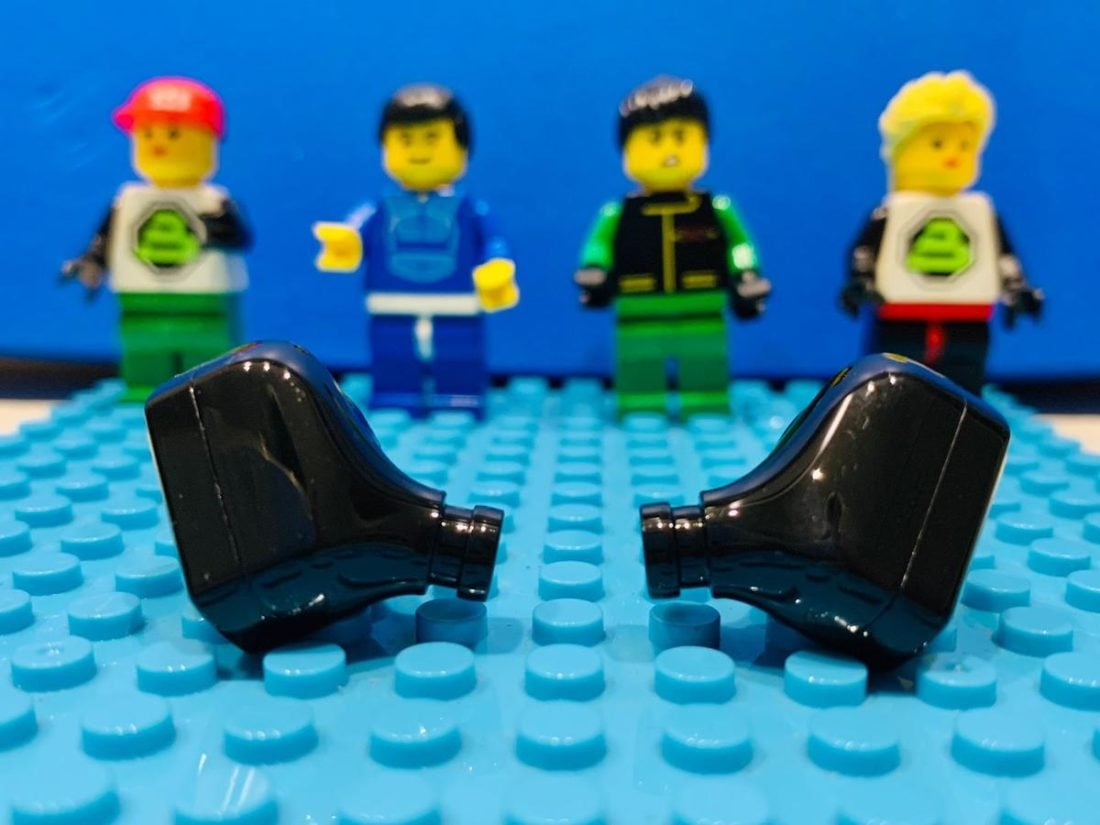
At the budget segment, some compromises are to be expected and the Zero do have flaws. They are not the best option for treble-sensitive folk or bassheads, and fit may be an issue for some. Soundstage is disappointing, and those who yearn for a thicker note weight with an analogue signature may also need to look elsewhere.
However, considering the scant coin asked for a pair of Zeros, these are nitpicks, and it is truly amazing what twenty bucks can get one nowadays in terms of sonic bliss.
Verily, it must be emphasized that the Zero are not “giant killers,” as they are not as technically adept as some higher-priced single DD benchmark pairs, such as the Tripowin Olina and DUNU TItan S.
This may come across as too harsh and unfair, considering the price differential. Still, some readers will surely ask how far the Zero can soar before they get pegged down.
To conclude, if one has more premium IEMs in their inventory, there may not be much value-add to get the Zero. However, the Zero are a great introductory set for those new to the hobby or for those that want to sample a neutral bright tuning that punches above their price point.
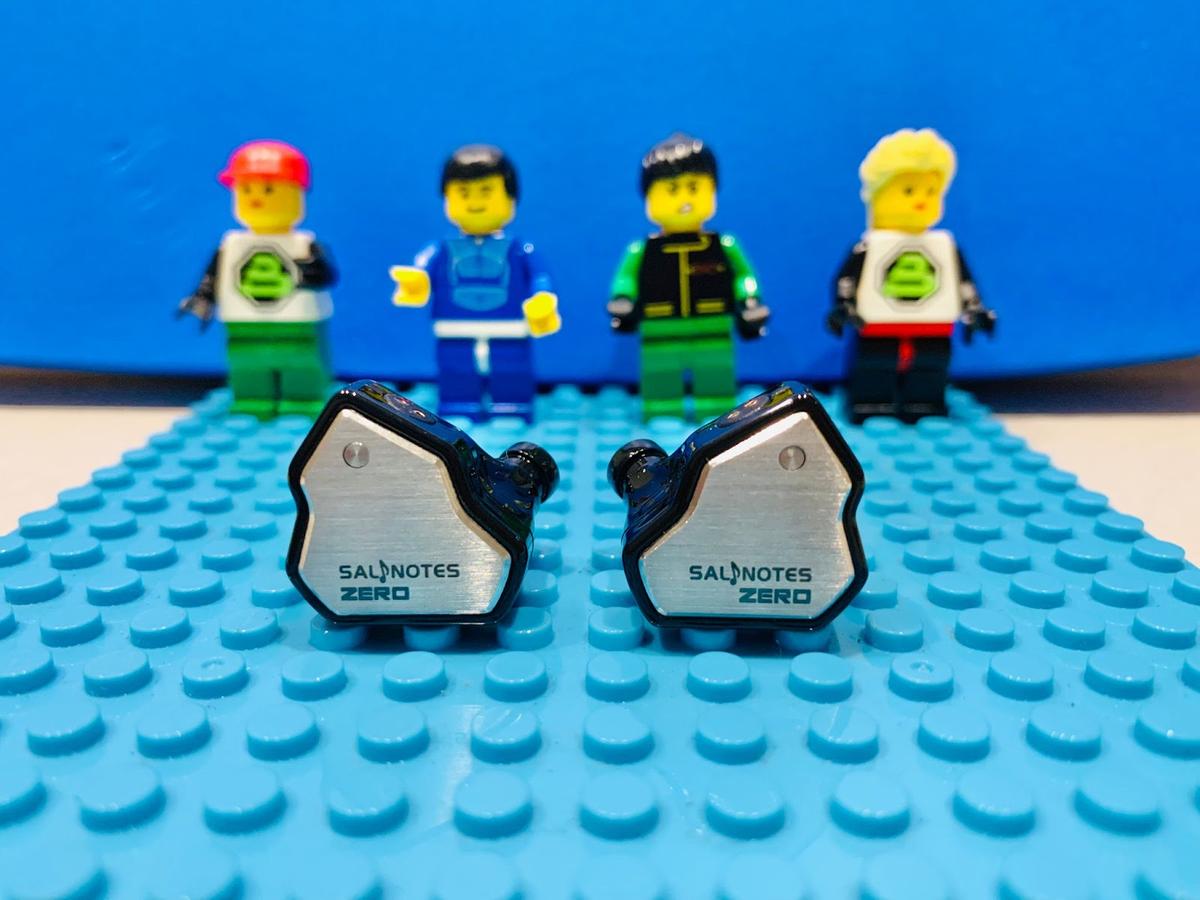
Hi Basking Shark,
Im curious about how this sounds against HZHM , my current fav. is Titan S and HZHM. considering of buying just as a side grade to my HZHM.
pros and cons , HZHM VS Salnotes Zero ?
Thank You
Hi Sir/Mdm
If you already have the Heart Mirror, it is probably no value add to get the Salnotes Zero. I won’t consider the Salnotes Zero to be a sidegrade to the Heart Mirror actually, it is a marginal downgrade.
The Heart Mirror has better technicalities (micro-details, imaging, instrument separation, bass tightness), comes with better accessories and has better fit/build. The Heart Mirror has greater treble extension, air and sparkle also.
Though the Heart Mirror is slightly harder to drive, and has less bass (sub-bass) quantity than the Salnotes.
TBH, I would recommend the Salnotes Zero for beginners new to the hobby who do not have more premium single DD sets. If you have Titan S and the Heart Mirror, best save your money for a more substantial upgrade.
There is actually a pro version of the Heart Mirror that just released, though it is a bit pricey at $70ish USD, it seems to have more bass than the original, and comes with a cable with modular 3.5/2.5/4.4mm plugs. That one seems interesting and I can’t wait for reviews to come out for that!
I am considering to buy the heart mirror, should i just buy this instead in give up on saving up for the heart mirror?
Hi Sir/Mdm
If you can top up the extra ten dollars or so, the Heart Mirror is definitely the better set.
However, I have read that the original Heart Mirror is being phased out, so it is not that easy to find in shops now. Seems the company is pushing it in favour of the new Pro version (Heart Mirror Pro).
I have the Pro version, and it is Harmanish/V shaped, tonally similar to the Moondrop Aria 2021. The Pro version has thicker note weight and is not as technical as the original Heart Mirror (which is neutral bright). The Pro version costs almost double and even though it has less treble/sibilance and more bass, the bass is of inferior quality (bass bleed), so I think the original Heart Mirror is still one of the unique neutralish IEMs at the budget segment.
Hello, what is the diameter of the nozzle? Which brand of foam tip fits it?
Thanks in advance.
Hi Sir
The diameter is about 6 mm.
I have tried the Comply T500 and T600 with the Salnotes Zero. The latter is a bit loose, the T500 may be a bit tighter and secure.
However, the Comply tips are obscenely expensive and they may cost the same price as the Salnotes Zero!
Hello, I am a foreign audience. English is not good, so please forgive me through google translation. It is the first time to buy earphones with a higher unit price for me. Go to the site to try them out. Compare the following three kinds of kato aria black aria se. Listening to the cloud or comparing er2se with aria se, the acceptable low frequency after listening is aria se>aria black>kato. The other parts are indeed kato>aria se>aria black, so I will choose aria se. If this is the case, I will not consider this The difference between the two prices, I see the frequency response curve, the low frequency of er2se is lower than that of aria se? So except for the low frequency, er2se will be better than aria se?
I just saw the spectrum curve of 7Hz Salnotes Zero and ARIA SE seems to be only in the bass, but I can’t listen to it live. I would like to ask if the actual sound of 7Hz Zero and ARIA SE is very different? I usually mainly listen to pop music
Hi Sir
Yes you are very right that the Frequency Response of the Salnotes Zero and Aria SE look very similar, except the Salnotes Zero has a bit more sub-bass, and the Zero is brighter with more sibilance.
But graphs don’t tell the full story, and the the Aria SE is better than the 7Hz Zero in technicalities by a little bit – in imaging, instrument separation and soundstage. The Aria SE also has less sibilance and is less sterile with a thicker note weight. The Aria SE isn’t as fatiguing and isn’t so aggressive in tuning.
So in essence, the Aria SE is more refined. But considering the Aria SE cost around 4x more than the Salnotes Zero, the former is not 4x better in technicalities, there’s huge diminishing returns the higher up the ladder you go.
If you are already intending to get a single DD set around the $70 – 100 bracket eg Aria 2021, Aria SE, Dunu Titan S, Tripowin Olina, then it is probably no value add to get the Salnotes Zero. The Salnotes Zero is good for beginners who want bang-for-buck, but it won’t beat some higher end single DDs.
As for your question for the ER2SE, apologies I haven’t heard this model. But I’m not really a fan of the etymotics series due to their very deep insertion, I tried some of their other models, and couldn’t tolerate the fit for more than a few minutes. And this deep insertion also cause soundstage depth to be compromised (ie soundstage sounds very 2D).
I hope someone can answer your query about the ER2SE, but if you could go down to a store to audition the etymotics IEMs first, that would be optimal, as the fit (deep insertion) is very polarizing, and it is no point getting a heavenly sounding IEM, but you get major discomfort and can’t use it for more than a few minutes.
If you buy Aria SE for $40 or $60, will you choose Aria SE compared to $20 7Hz Zero? Or if you buy Aria SE for $40 and $60, will you choose 7Hz Zero instead?
Hi Sir
As per the previous post, the Aria SE is slightly better in technicalities than the 7Hz Zero, but it is not 4x better as what the price differential would suggest. The Aria SE is more refined tonally though.
I guess if you can get the Aria SE for $40, I would definitely opt for the Aria SE in that case, it is a no brainer.
But at $60 – 80USD (I think the Aria SE usually retails at $70ish USD), there are huge diminishing returns. Having said that, once you have heard something better, it is quite hard to “unhear” it and go back down the ladder haha.
My 2 cents is that if you have the extra coin, just save up and buy it, get something better and call it a day, rather than keep buying cheap budget sidegrades. If every few weeks you buy a cheap budget $20 IEM, they will add up to a midFI IEM soon enough, and most will end up unused in a drawer.
How does this compare with CCA CRA?
Hi Sir
The CCA CRA is much more V-shaped, compared to the neutralish Salnotes Zero. The bass is hence more pronounced on the CRA, and it also has a brighter treble (which veers into harshness and sibilance).
The CRA may be more useful for bassy music genres eg hip hop and EDM, but generally I prefer the Salnotes Zero over it.
How 7HZ ZERO compares to CCA CRA+ CONSIDERING THEY ARE BETTER THAN CCA CRA
AND WHAT WOULD HEADPHONES BE BETTER THAN IEM UNDER 100$ RANGE
THANK YOU FOR YOUR REPLY
Hi Sir/Mdm
Apologies, I haven’t tried the CCA CRA+.
But for an upgrade under $100, do consider the Dunu Titan S and Tripowin Olina. They have better technicalities and fit than the Salnotes Zero.
Hello
I bought Salnotes Zero three days ago and I have to say I agree with you 100%. Unfortunately I didn’t came across your review before purchasing them because I wouldn’t buy them.
To my ears they are a bit too much on sub bass (maybe because I came from apple earbuds), very thin note weight/sterile, extreme bright and piercing highs.
Bass is tight, separation is good too.
This is my first IEM.
For years I have used apple earbuds (which are really not that bad). I have used apple earbuds for playing piano on my midi with Kontakt libraries, mixing/mastering on FL Studio/Logic for fun.
I’m very happy to discover this IEMs community, before that I was only involved in studio monitors/Hifi speakers communities.
So in conclusion my plan is to find a decent IEM according to my preference target, around 150$ – 350$ and not to spend anymore on those budget chifi.
Thank you for your correct reviews.
Thank you Sir/Mdm
What music genres do you usually listen to?
Are you looking for something with a thicker note weight?
Need a budget IEM recommendation. Prefer something neutral and not bassy. Soundstage / quality should hopefully be similar/better than my (not working) Samson SR 950. There are too many and kinda confused since I’ve never tried a good one
Hi Sir/Mdm
Most IEMs will not be able to compete in soundstage against headphones like the SR950. It is quite an apples to oranges comparison as such, IEMs and headphones have their own pros and cons.
Definitely at the budget segment, even the IEM I tried that has the “best” soundstage (Tripowin Olina), can’t beat most headphones in the soundstage department.
But if you look past the soundstage request, then some good ultra-budget neutralish IEMs to consider would be the Salnotes Zero, Dunu Titan S, Tripowin Olina SE.
How do you feel about these in a gamer’s POV for FPS?
Hi Sir,
Generally I think Headphones would make a better option for FPS as they give superior soundstage compared to traditional IEMs.
Of course, if the IEM has good imaging, this can perhaps offset the weak soundstage. But for gaming, I do think the Tanchjim OLA is superior in technicalities and imaging than the Salnotes Zero, though it has quite a bad fit. Perhaps if you can audition one, you can see if the comfort suits you.
Hope this helps, and maybe some others can also give some good recommendations!
This was a good read. Would you recommend these for a beginner audiophile (first ever IEM purchase)?
I am mostly into metal music and the subgenres: progressive metal, technical death metal, deathcore, metalcore music, math metal, djent, etc.
If not this, then what would you recommend for such genres?
TIA!
Hi Sir/Mdm
Yes the Salnotes Zero is one of the best price-to-performance budget IEMs for beginners.
I don’t listen to metal that much, but from what some metalheads told me, they want the bass to be very tight and clean, is that correct?
The Salnotes Zero might do a good job in that respect, it is quite technical, neutral bright. However, do metal songs have a lot of boosted treble? If that is the case, the Zero might be a bit harsh if cymbals and high-hat splashes.
There are other great budget pairs around the same ball park such as the Truthear HOLA and Tangzu Wan’er, however these 2 have slower bass than the Salnotes Zero.
May I know what could be the filter size of this IEM?